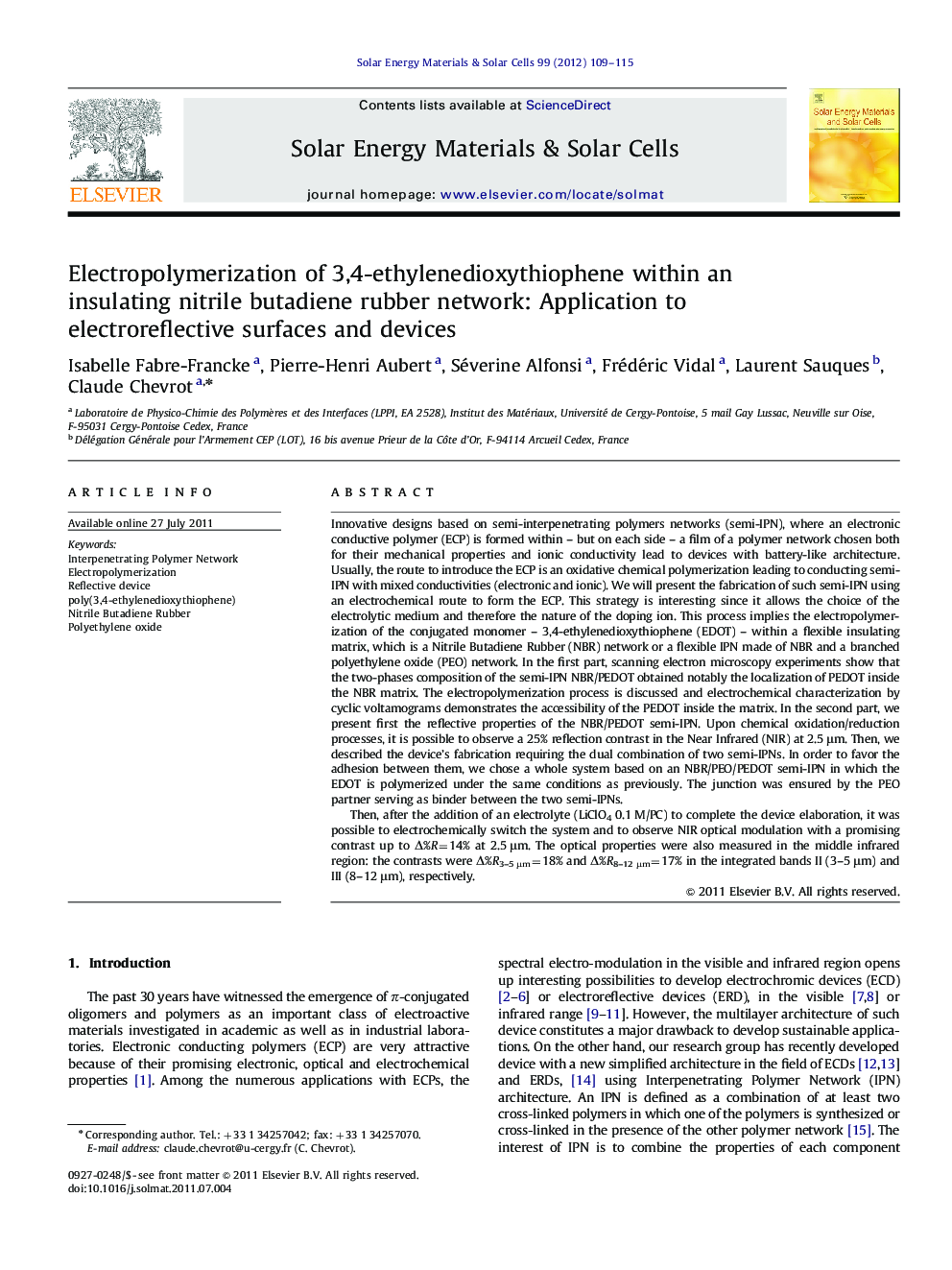| Article ID | Journal | Published Year | Pages | File Type |
|---|---|---|---|---|
| 79005 | Solar Energy Materials and Solar Cells | 2012 | 7 Pages |
Innovative designs based on semi-interpenetrating polymers networks (semi-IPN), where an electronic conductive polymer (ECP) is formed within – but on each side – a film of a polymer network chosen both for their mechanical properties and ionic conductivity lead to devices with battery-like architecture. Usually, the route to introduce the ECP is an oxidative chemical polymerization leading to conducting semi-IPN with mixed conductivities (electronic and ionic). We will present the fabrication of such semi-IPN using an electrochemical route to form the ECP. This strategy is interesting since it allows the choice of the electrolytic medium and therefore the nature of the doping ion. This process implies the electropolymerization of the conjugated monomer – 3,4-ethylenedioxythiophene (EDOT) – within a flexible insulating matrix, which is a Nitrile Butadiene Rubber (NBR) network or a flexible IPN made of NBR and a branched polyethylene oxide (PEO) network. In the first part, scanning electron microscopy experiments show that the two-phases composition of the semi-IPN NBR/PEDOT obtained notably the localization of PEDOT inside the NBR matrix. The electropolymerization process is discussed and electrochemical characterization by cyclic voltamograms demonstrates the accessibility of the PEDOT inside the matrix. In the second part, we present first the reflective properties of the NBR/PEDOT semi-IPN. Upon chemical oxidation/reduction processes, it is possible to observe a 25% reflection contrast in the Near Infrared (NIR) at 2.5 μm. Then, we described the device's fabrication requiring the dual combination of two semi-IPNs. In order to favor the adhesion between them, we chose a whole system based on an NBR/PEO/PEDOT semi-IPN in which the EDOT is polymerized under the same conditions as previously. The junction was ensured by the PEO partner serving as binder between the two semi-IPNs.Then, after the addition of an electrolyte (LiClO4 0.1 M/PC) to complete the device elaboration, it was possible to electrochemically switch the system and to observe NIR optical modulation with a promising contrast up to Δ%R=14% at 2.5 μm. The optical properties were also measured in the middle infrared region: the contrasts were Δ%R3–5 μm=18% and Δ%R8–12 μm=17% in the integrated bands II (3–5 μm) and III (8–12 μm), respectively.
Figure optionsDownload full-size imageDownload as PowerPoint slideHighlights► Electrochemical route is used to fabricate semi-IPN. ► First EDOT electropolymerization in insulating NBR matrix. ► Ionic conductivity was enhanced (0.8×10−3S/cm) by addition of a PEO network (50% in NBR). ► Optical reflectivity measurements were performed in NIR and MIR region. ► Electroreflective devices exhibit optical contrast of 17% and 18% in bands II and III.
